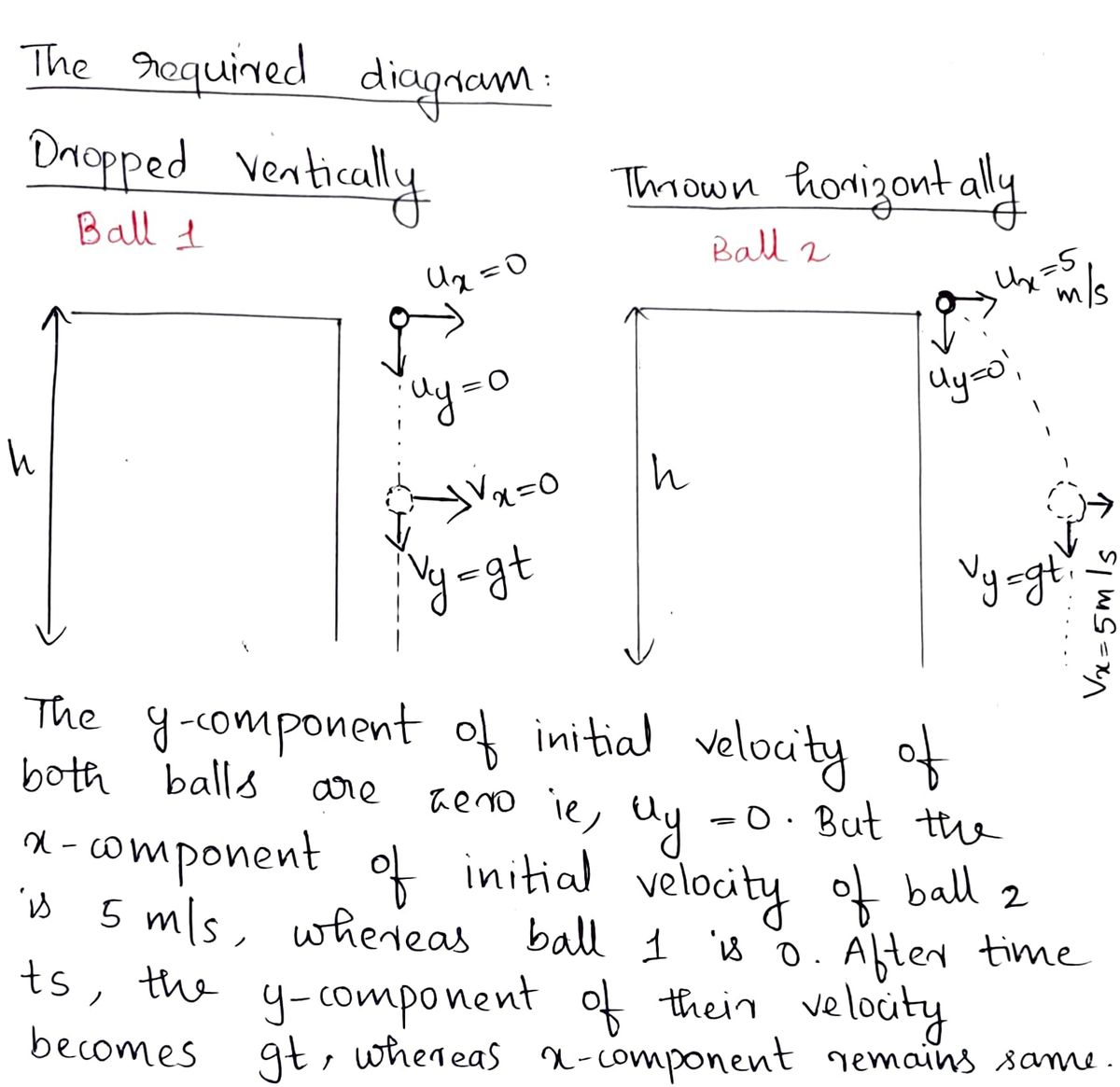Two balls are held at the same height. At the same time, ball A is dropped straight down, while ball B is thrown horizontally at 5 m/s. Question A: Which ball hits the ground first? 1. Ball A 2. Ball B 3. They hit at the same time 4. Not enough information Question B: Which ball has the fastest speed when it hits the ground? 1. Ball A 2. Ball B 3. They have the same speed 4. Not enough information Please answer questions A and B
Displacement, Velocity and Acceleration
In classical mechanics, kinematics deals with the motion of a particle. It deals only with the position, velocity, acceleration, and displacement of a particle. It has no concern about the source of motion.
Linear Displacement
The term "displacement" refers to when something shifts away from its original "location," and "linear" refers to a straight line. As a result, “Linear Displacement” can be described as the movement of an object in a straight line along a single axis, for example, from side to side or up and down. Non-contact sensors such as LVDTs and other linear location sensors can calculate linear displacement. Non-contact sensors such as LVDTs and other linear location sensors can calculate linear displacement. Linear displacement is usually measured in millimeters or inches and may be positive or negative.
Two balls are held at the same height. At the same time, ball A is dropped straight down, while ball B is thrown horizontally at 5 m/s.
Question A: Which ball hits the ground first?
1. Ball A
2. Ball B
3. They hit at the same time
4. Not enough information
Question B: Which ball has the fastest speed when it hits the ground?
1. Ball A
2. Ball B
3. They have the same speed
4. Not enough information
Please answer questions A and B

Step by step
Solved in 3 steps with 3 images









